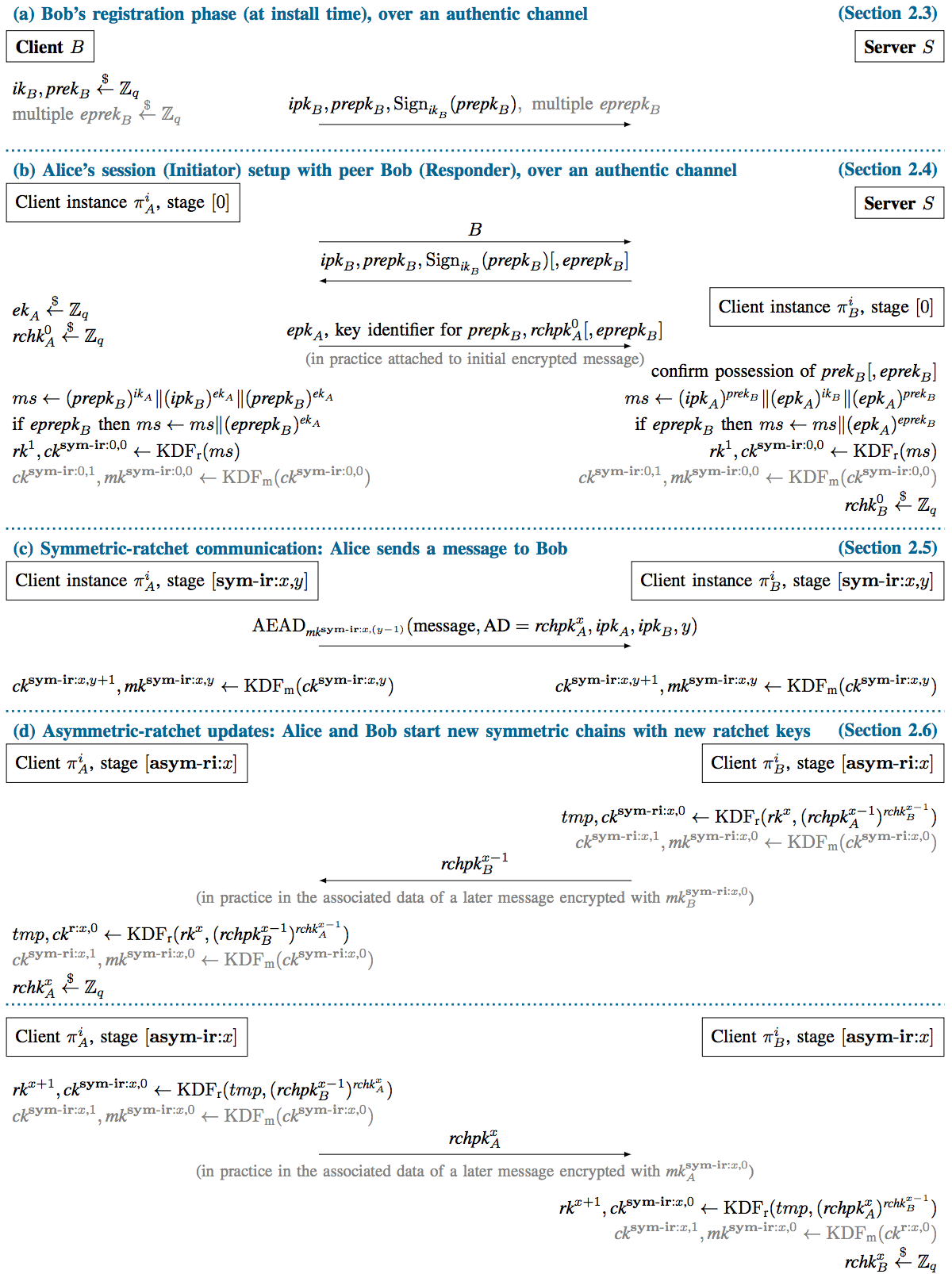
Douglas Stebila
A formal security analysis of the Signal messaging protocol

Abstract
The Signal protocol is a cryptographic messaging protocol that provides end-to-end encryption for instant messaging in WhatsApp, Wire, and Facebook Messenger among many others, serving well over 1 billion active users. Signal includes several uncommon security properties (such as “future secrecy” or “post-compromise security”), enabled by a technique called ratcheting in which session keys are updated with every message sent. We conduct a formal security analysis of Signal’s initial extended triple Diffie–Hellman (X3DH) key agreement and Double Ratchet protocols as a multi-stage authenticated key exchange protocol. We extract from the implementation a formal description of the abstract protocol and define a security model which can capture the “ratcheting” key update structure as a multi-stage model where there can be a “tree” of stages, rather than just a sequence. We then prove the security of Signal’s key exchange core in our model, demonstrating several standard security properties. We have found no major flaws in the design and hope that our presentation and results can serve as a foundation for other analyses of this widely adopted protocol.
Keywords: messaging, post-compromise security, Signal, future secrecy, authenticated key exchange, provable security, multi-stage key exchange
Reference
Katriel Cohn-Gordon, Cas Cremers, Benjamin Dowling, Luke Garratt, Douglas Stebila. A formal security analysis of the Signal messaging protocol. Journal of Cryptology, 33:1914-1983. Springer, October 2020. © IACR.
Download
BibTeX
Funding
This research was supported by:- Australian Research Council (ARC) Discovery Project grant DP130104304
- Natural Sciences and Engineering Research Council of Canada (NSERC) Discovery grant RGPIN-2016-05146
- NSERC Discovery Accelerator Supplement grant RGPIN-2016-05146